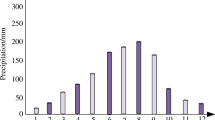Abstract
Water pollution accidents such as chemical spill and toxicants leach have become a serious issue in the world, which brings great threats to the aquatic ecosystem and drinking water safety. To detect unknown pollutions in time and take proper emergency actions, this study developed a system which integrated an online intelligent water quality monitoring device with a high efficient water quality model. The device is based on water quality probes and biological sensors which use fish motion as indicator. The numerical model is a combination of Euler and Lagrangian approaches. Finite element method is applied to simulate the flow field in an unstructured grid, and the pollutant behaviours are traced through particle tracking. Oracle is used to manage the basic and monitoring data, and ArcSDE as well as ArcIMS technologies are applied to make the system WebGIS-based so as to improve the data receiving and dispatching efficiency. The developed system has been successfully operated in Douhe Reservoir and Taihu Lake, China, where drinking water intakes are installed. It is seen from the applications that the online intelligent water quality monitoring and emergency support system can be of great support to emergency management.
Similar content being viewed by others
References
Ren Zongming, Zha Jinmiao, Ma Mei et al. The early warning of aquatic organophosphorus pesticide contamination by on-line monitoring behavioral changes of Daphnia magna[J]. Environ Monitor Ass, 2007, 134(1–3): 373–383.
Ren Zongming, Li Zhiliang, Ma Mei et al. Behavioral responses of Daphnia magna to stresses of chemicals with different toxic characteristics[J]. Bull Environ Contam Toxi, 2009, 82(3): 310–316.
Ren Zongming, Wang Zijian. Differences in the behavior characteristics between Daphnia magna and Japanese madaka in an on-line biomonitoring system[J]. Journal of Environmental Sciences, 2010, 22(5): 703–708.
Huang Guoxian, Zhou Jianjun, Xia Junqiang. The full three-dimensional numerical simulation of flow and suspended load transport of the Yellow River (from Hua Yuankou to Xinzhai)[C]. In: The 2nd International Yellow River Forum. Zhengzhou, China, 2005. 1403–1410
Huang Guoxian, Chen Gang, Chen Qiuwen et al. The numerical modelling of the pollution accident in rivers[C]. In: The 9th International Conference on Hydroinformatics. Tianjin, China, 2010. 2401–2408.
Author information
Authors and Affiliations
Corresponding author
Additional information
Supported by National High-Tech R&D Program of China (“863” Program, No. 2009AA06A418). CHEN Qiuwen, born in 1974, male, Dr, research professor.
CHEN Qiuwen, born in 1974, male, Dr, research professor.
Rights and permissions
About this article
Cite this article
Chen, Q., Ma, J., Wang, Z. et al. Biological early warning and emergency management support system for water pollution accident. Trans. Tianjin Univ. 18, 201–205 (2012). https://doi.org/10.1007/s12209-012-1662-4
Accepted:
Published:
Issue Date:
DOI: https://doi.org/10.1007/s12209-012-1662-4




